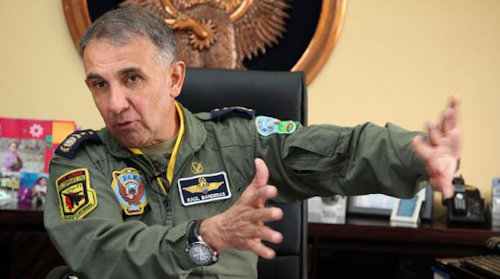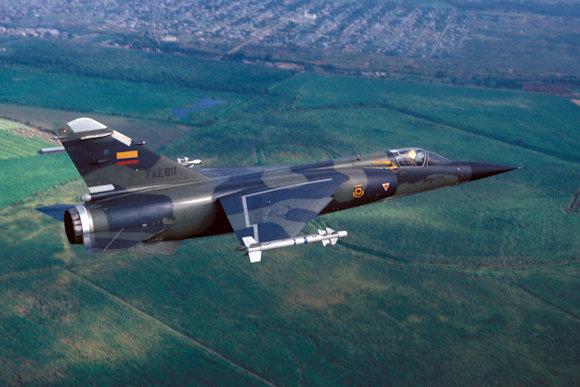At the beginning of the 90 years the tension between the two countries for the disputed border of the Condor-Canepa went up dramatically with numerous incidents at the border.
The extremely agitated domestic political situation in Peru and Ecuador also contributed to the burning of the fire. In both countries there was a presidential election and the respective presidents were looking for a reconfirmation, therefore they were aiming to obtain luster also through a show-down military.
At the beginning of the 1995, therefore, in open violation of the agreements previously made, the Peruvian commander of the 25 ° battalion Callao ordered his fellow Ecuadorian to clear all the Alto Canepa obtaining an obvious rejection as an answer.
A subsequent attempt to avoid military escalation with a military meeting, which took place shortly after the Peruvian ultimatum, ended with nothing. Consequently, hostilities began between the parties.
In the night between the 9 and 11 January 1995 two Peruvian patrols were captured by Ecuadorian military departments operating in the area after a hard gunfight.
The Peruvian reaction did not wait and came, once again, from the third dimension: the sky. The 21 January, a Peruvian airborne battalion on 22 aircraft HIP and Hind went to the disputed area creating a location called Base Norte.
In this way they started again different and violent fights in the border area between the patrols of the two armies, with about thirty dead among the warring parties. Given the situation, Peru immediately sent reinforcements to the border while Ecuadorian helicopters launched rockets into the city of Tumbes.
A few days later, however, the first air loss was recorded with the demolition of a Mi-8TV of the Peruvian army, shot down by an Ecuadorian land / air missile, with the loss of the entire crew of five men. But the Peruvians returned the favor by destroying the 31 a helicopter Gazelle of the Army of Ecuador.
In the following days the fights between the parties continued with alternating intensity, being able to count on the support of the respective aviation. Just in an action to support their troops FAP lost one of its bombers Canberra because of a crash against one of the many mountains in the area, and a helicopter Price hit by several backpacking missiles.
Failed another attempt to reach a ceasefire, the border conflict resumed even more rigorously.
 In order to better support the terrestrial operations on the front, the FAP launched many sorties in a few hours against the Quito posts around Base Sur and Cueva de los Talios using Mirage 5P e Fitter by day, e Canberra night.
In order to better support the terrestrial operations on the front, the FAP launched many sorties in a few hours against the Quito posts around Base Sur and Cueva de los Talios using Mirage 5P e Fitter by day, e Canberra night.
These raids continued in the following days also employing A-37 against the city of Tiwintza and the Ecuadorian backwaters. THE blowpipe the defenders, however, managed to make the attacking aircraft pay a very salty account.
It was at this point that the high command of Ecuador decided to use the Mirage F-1JA fighters of the 2112 ° fighter squadron that immediately entered into action intercepting an attack group of the FAP formed by five Su-22.
From an estimated distance of about ten kilometers, the The Mirage, piloted by Major Raul Banderas (photo), he aimed two of the Su-22s of flight training at 600 meters above the Tiwintza vertical, and launched a R.550 Magic II air / air missile.
The missile hit the plane of Major Enrique "Poeta" Caballero Orrego, deputy commander of the escuadron Los Tigres. The same fate was touching shortly thereafter Fitter of Colonel Victor Maldonado Begazo by means of a Magic III shot by Captain Carlos Uscategui, follower of the aforementioned Major Raul Banderas.
Too late, the Peruvian Mirage 2000Ps intervened to avoid the slaughter: the Ecuadorian planes were able to see them with their radar and had moved away in time.
The negative balance sheet of the FAP would have subsequently worsened with the abatement of Commander Hilario Valladores' A-37 by means of a Shafrir / Python missile fired from Kfir piloted by the captain Mauricio Mata on a CAP mission along the Cenepa valley with another airplane of the same model.
But, even more seriously, the clashes victoriously supported by the Ecuadorians gave them control of the air above the battlefield. And of this, Quito's soldiers were able to take advantage immediately, using effectively Dragonfly, The Mirage, e Jaguar in support of land forces in a vigorous counterattack.
 The FAP had entered a crisis, and losses continued: Ecuadorian antiaircraft batteries, in mid-February, were able to inflict heavy losses on a Peruvian attack force by breaking down an MI-8 and a Mi-17 (photo). At the same time, they significantly damaged one Canberra engaged in a mission to support the army forces.
The FAP had entered a crisis, and losses continued: Ecuadorian antiaircraft batteries, in mid-February, were able to inflict heavy losses on a Peruvian attack force by breaking down an MI-8 and a Mi-17 (photo). At the same time, they significantly damaged one Canberra engaged in a mission to support the army forces.
The Peruvians scored only two hits throughout this period: a Kfir damaged by a SA-14 air-to-air missile Gremlin and an AT-37 of the 2311 ° squadron struck irreparably by a SAM-7 above Cueva de los Tallos.
Although the February 17 international diplomacy imposed a ceasefire on the warring parties with the Itamaraty agreement, hostilities continued. FAP helicopters undermined access to Tiwintza and Apama and subsequently, the 22 February, transported and supported the special departments of the Army and Navy aimed at reconquering the previously lost contested area. Despite initial tactical victories, however, the Peruvians did not succeed and lost at least fifty men in vain.
The 1 ° March 1995 entered into force a truce between the parties. There Condor war, with its aeronautical implications, was substantially over. The FAP and the Air Force of the Peruvian Army had lost, in total, four reactors and five helicopters, with fifteen deaths among the crews. Ecuador lost only one Gazelle of the Army, to which to add an A-37 and a Kfir badly damaged.
Also read "The 1995 Air Force between Peru and Ecuador: premise and set-up (part 1 / 2)"












